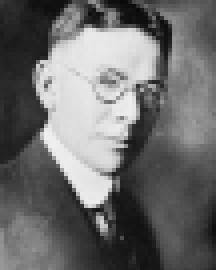Below is a partial transcript of this episode. It is designed to be heard, though, so we recommend listening to the EdSurge Podcast episode on Apple Podcasts, Stitcher, Spotify, or wherever you listen.
How would it feel to be a bookish kid—a kid who feels like they don’t quite belong—and have someone come in and tell you that you’re special. That you have hidden talents that aren’t being recognized.
That you’re gifted.
That happens to a lot of kids. One minute you’re in so-called regular classes, and then the next minute, you’re given a test and placed in special classes for the “gifted and talented.” Often these classes have more engaging material and better student-teacher ratios.
OK, now what does it feel like to be the kid who’s not selected?
Either way, it’s a big moment for a lot of kids, and one that happens at age 7 or 8.
Where did the idea for these gifted programs come from? And how do we decide who gets to be part of them?
It turns out that the notion of gifted education can be traced back more than a century, to a quirky kid who was born in 1877, in a farm town in Indiana. His name was Lewis Terman.
These days, not many people have even heard his name. But he was at one time about as famous as any psychology professor could get.
That’s because Lewis Terman pretty much invented the modern IQ test. And he devoted much of his career to what he saw as a major problem in education—that super-smart kids were bored or overlooked. It was like there was this untapped natural resource—one Terman seemed to consider as valuable as literal diamonds, as in “diamonds in the rough.”
Terman wanted to change how the world viewed smart kids. Because back in his day, precocious children were seen as more of a problem than an asset. If anything, people saw them as more likely to be antisocial. They were misfits.
“The overarching thought at the time was that highly gifted people had a lot of mental disabilities,” says Jaret Hodges, an assistant professor at the University of North Texas who has done research on Terman. “You know there was this idea of the crazed genius, the struggling genius. And Lewis Terman was like, no hold on a second, let’s actually see what high-IQ individuals look like?”

Terman’s hypothesis was that smart kids weren’t broken, they were just misunderstood. And he believed tapping into this resource was key to creating a better society.
He set out to study these “gifted” children, as he called them. He selected more than 1,400 kids from various parts of California and dug into their lives.
He measured and weighed and recorded nearly everything he could think of:
where their grandparents had been born, what health problems they suffered from,
the size of the gifted children's cranial capacity and the grip strength of both their left and right hands.
He asked them what subjects they preferred in school, what collections they kept (stamps? plants?). And what games they liked to play.
Gifted boys, he found, showed a greater preference for hiking, dancing, swimming, croquet, dominoes, and Parcheesi than the control group. But they had less interest in basketball, walking on stilts, flying kites, and playing farmer in the dell.
He didn’t stop with that first study, though. He checked in every few years to see how their lives developed. That study, known as the Terman Study of the Gifted, was a revolutionary approach to social-science research. No one had done a serious longitudinal study of this type in psychology, ever. And after Terman’s death, researchers continued to track these gifted folks, who became known, endearingly, as “Termites.” Research on this rich data set is still going, and it’s the longest-running longitudinal study of all time.
This year, it turns out, is the 100th anniversary of the start of this study of gifted children. Which seems like a natural time to ask, how did Terman’s ideas about intelligence shape education?
That question led us to some dark truths about Terman, and to a surprisingly fierce debate going on right now about his legacy—and about the future of gifted education.
This episode is part of Bootstraps, a podcast series about merit, myth and education. This is the third of a six-episode series that we’re co-producing with our friends at the journalism nonprofit Open Campus. We are unpacking popular narratives about who gets what opportunities in America, and wondering how it all could all be different.


